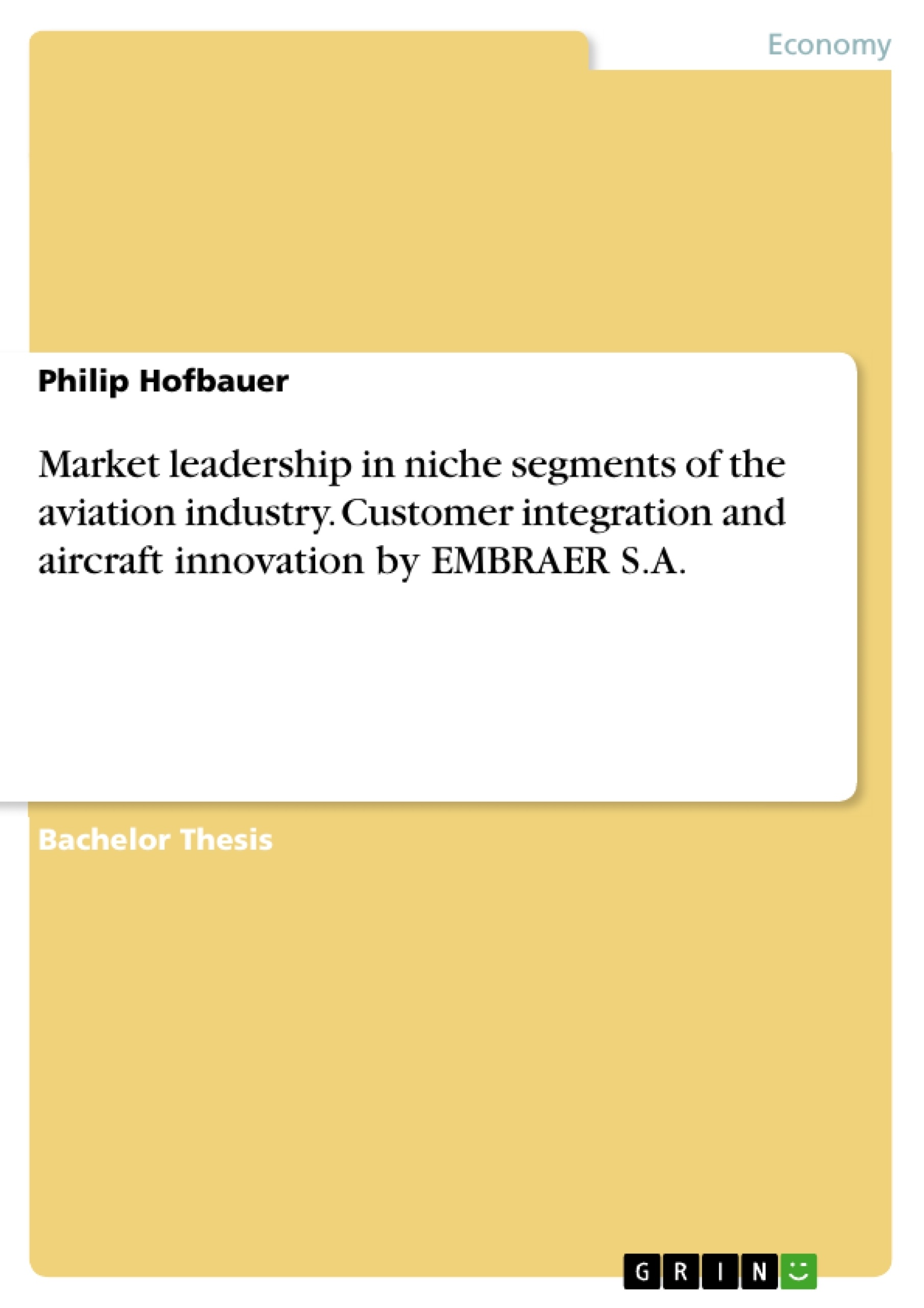The thesis will examine how Embraer has gained a leading position in its market segment by matching product innovations to the demands of its customers, and how this position is likely to be defended in a highly-sensitive, capital-intense, hightechnology industry. Furthermore, the thesis will explore how decisions are made regarding the fleet composition of Embraer’s main customers and how their needs are integrated into Embraer’s business operations.
The successful concepts of Embraer are primarily based on product families that can be offered for different markets. Thus, Embraer’s development and business practices can be critically evaluated with regard to other emerging nations, such as India and China, that will enter this or similar markets soon. As Embraer has different strategic business units in both civilian and defense markets, this thesis will focus primarily on the company’s operations in the commercial aircraft market.
The second chapter of the thesis gives a short overview of the history of the aviation industry and its current situation. Chapter three shows the reader a detailed picture of particular markets and sub-markets where Embraer has operations, the state of the company, its products, and its history. The fourth chapter analyzes the primary market for Embraer, the forces of competition that occur in that market as well as the relationship between Embraer and competing stakeholders. The fifth and final chapter will describe how cost and other considerations shape airline fleet decisions, and how Embraer responds to the expectations of its main customers.
Inhaltsverzeichnis (Table of Contents)
- 1. Introduction
- 1.1 Foreword
- 1.2 Focus and definitions
- 1.3 Target
- 1.4 Structure
- 2. An Overview of the aviation industry
- 2.1. Brief history
- 2.2 Technological developments
- 2.3 Economic developments
- 2.4 Political influence in the aviation industry
- 3. Embraer S.A.
- 3.1 Organizational background and ownership
- 3.2 Embraer's economic impact and state subsidies
- 3.3 Financial development and performance
- 3.4 Definition of Embraer's markets
- 4. Market potentials for Embraer
- 4.1 Market analysis by Porter
- 4.1.1 Competition in the industry
- 4.1.2 Threats from Substitutes
- 4.1.3 Threats from Competitors
- 4.1.4 Bargaining power of the suppliers
- 4.1.5 Bargaining power of the customers
- 4.2 Comprehensive SWOT analysis
- 4.2.1 Strengths
- 4.2.2 Weaknesses
- 4.2.3 Opportunities
- 4.2.4 Threats
- 4.3 Conclusion
- 5. Embraer's competitive strategy
- 5.1 The demand side
- 5.2 Fleet decisions of airlines
- 5.3 The supply side
- 5.4 Embraer's strategies on other markets
- 5.5 Potential new market segments and strategic outlook
- 5.6 Conclusion
Zielsetzung und Themenschwerpunkte (Objectives and Key Themes)
This Bachelor Thesis aims to examine the market position of Embraer S.A. within the aviation industry. By analyzing the company's competitive strategies and identifying key market factors, the thesis seeks to understand how Embraer can become a market leader in niche segments of the aviation industry through customer integration and aircraft innovations.
- Competitive Advantage and Market Leadership in Niche Segments
- Customer Integration and Aircraft Innovation
- Porter's Five Forces Framework
- SWOT Analysis
- Market Dynamics in the Aviation Industry
Zusammenfassung der Kapitel (Chapter Summaries)
The thesis begins with an introduction outlining the focus and target of the research, followed by a brief overview of the aviation industry, including its history, technological advancements, economic developments, and political influences. Chapter 3 focuses on Embraer S.A., exploring its organizational structure, economic impact, financial performance, and market definitions. Chapter 4 examines market potentials for Embraer using Porter's Five Forces Framework and a comprehensive SWOT analysis. Finally, Chapter 5 delves into Embraer's competitive strategy, exploring the demand and supply sides, strategic outlook, and potential new market segments.
Schlüsselwörter (Keywords)
The research focuses on the aviation industry, specifically niche segments, customer integration, aircraft innovations, Embraer S.A., Porter's Five Forces Framework, SWOT analysis, competitive strategy, market analysis, and market leadership.
- Citar trabajo
- Philip Hofbauer (Autor), 2006, Market leadership in niche segments of the aviation industry. Customer integration and aircraft innovation by EMBRAER S.A., Múnich, GRIN Verlag, https://www.grin.com/document/85550



